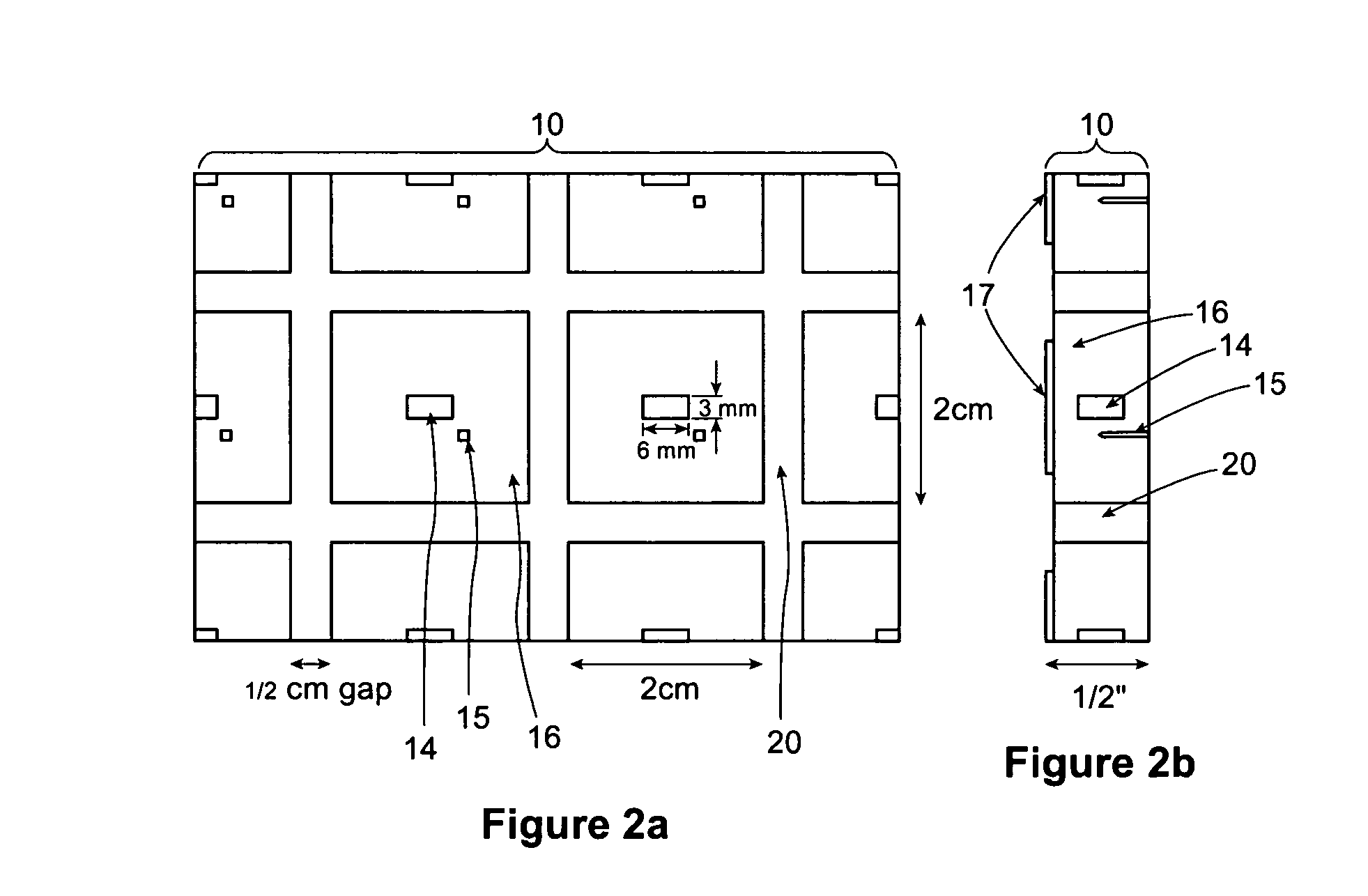Method and apparatus for testing heavy oil production processes
- Summary
- Abstract
- Description
- Claims
- Application Information
AI Technical Summary
Benefits of technology
Problems solved by technology
Method used
Image
Examples
Embodiment Construction
[0042]FIG. 1 is calculated from the prior art as described in the background and illustrates the problems that the present invention seeks to address. FIG. 1 shows transient (one dimensional) temperature profiles at different times for a section of tar sand initially at 8C when one edge is suddenly heated to 50C, for example by a condensing solvent process. FIG. 1 also shows a “quasi-steady state” temperature profile for a bitumen extraction process taking place in 8C tar sand with the interface heated to 50C and an extraction rate of 5 cm / day. A physical model experiment must reproduce the appropriate “quasi-steady state” temperature profile, to accurately model insitu processes and thus to generate meaningful process test data. It will be understood by those skilled in the art that FIG. 1 only shows one-dimensional temperature profiles rather than the full 2D temperature map for the sake of clarity.
[0043] At “quasi-steady state” the sample has attained a temperature profile that ...
PUM
 Login to view more
Login to view more Abstract
Description
Claims
Application Information
 Login to view more
Login to view more - R&D Engineer
- R&D Manager
- IP Professional
- Industry Leading Data Capabilities
- Powerful AI technology
- Patent DNA Extraction
Browse by: Latest US Patents, China's latest patents, Technical Efficacy Thesaurus, Application Domain, Technology Topic.
© 2024 PatSnap. All rights reserved.Legal|Privacy policy|Modern Slavery Act Transparency Statement|Sitemap



